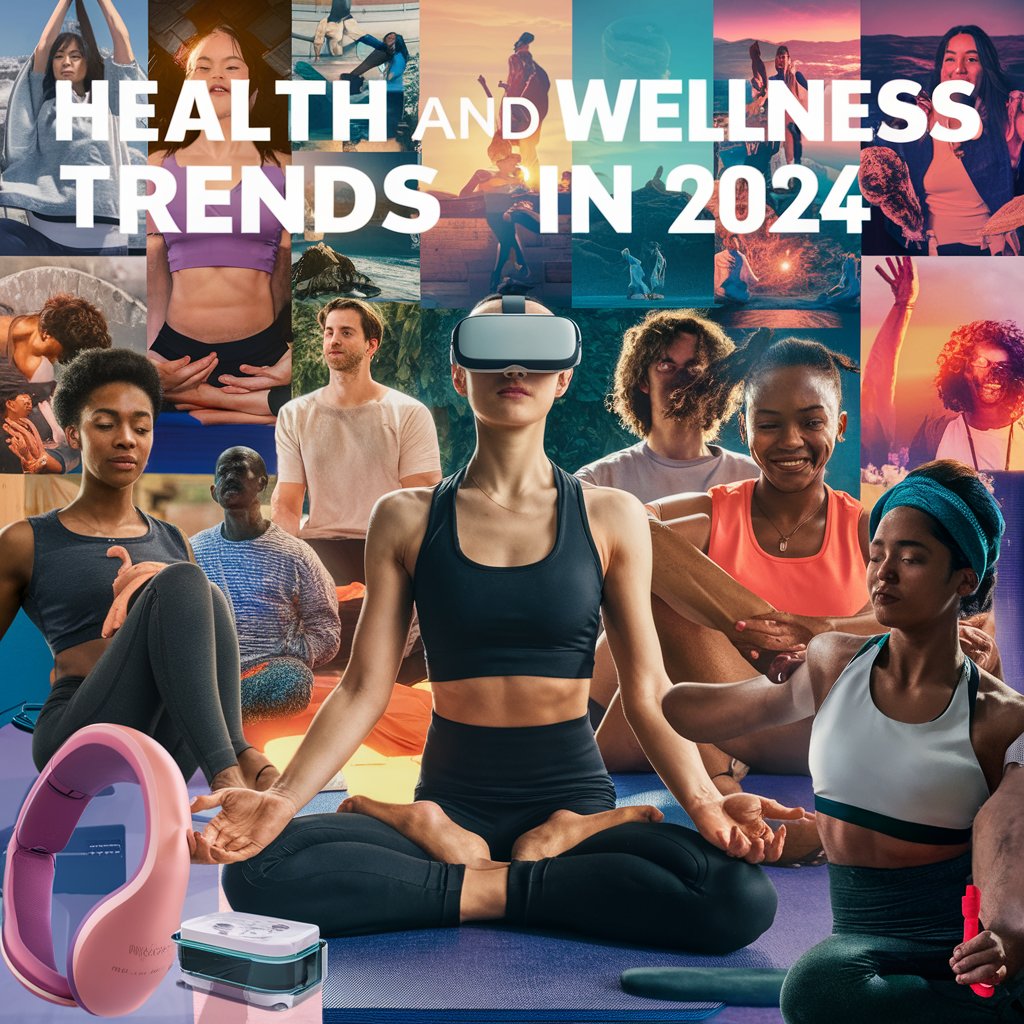In 2024, health and wellness trends are evolving to reflect a more holistic approach, integrating physical, mental, and emotional well-being. This shift is driven by advancements in technology, increased awareness of mental health issues, and a growing emphasis on preventative care. In this article, we will explore some of the most significant trends shaping the health and wellness landscape in 2024, enriched with personal anecdotes and stories to bring these concepts to life.
The Rise of Personalized Nutrition
The Science Behind Personalized Diets
In 2024, personalized nutrition has become more accessible and mainstream. This approach tailors dietary recommendations based on an individual’s genetic makeup, microbiome composition, and lifestyle factors. Advances in genomics and microbiome research have enabled companies to offer customized diet plans that promise improved health outcomes.

A Personal Journey with Personalized Nutrition
Last year, I decided to try personalized nutrition after struggling with chronic fatigue and digestive issues. I sent a sample of my DNA to a reputable company, which provided me with detailed insights into how my body processes different nutrients. The results were eye-opening; I learned that I had a genetic predisposition to gluten sensitivity and a slower metabolism for certain fats.
Armed with this information, I worked with a nutritionist to develop a meal plan tailored to my genetic profile. Within weeks, I noticed a significant improvement in my energy levels and digestion. This experience highlighted the potential of personalized nutrition to transform lives by addressing individual needs rather than relying on one-size-fits-all dietary guidelines.
Mental Health: From Awareness to Action
The Impact of Digital Mental Health Tools
The stigma surrounding mental health has been steadily decreasing, and in 2024, there is a stronger focus on actionable solutions. Digital mental health tools, including apps and online therapy platforms, have become essential resources for many individuals seeking support.
Real-Life Impact of Digital Therapy
My friend Sarah, a busy professional and mother of two, struggled with anxiety for years but found it challenging to attend in-person therapy sessions due to her hectic schedule. In 2024, she discovered an online therapy platform that matched her with a licensed therapist and allowed her to attend sessions from the comfort of her home. This flexibility made it possible for Sarah to prioritize her mental health without compromising her other responsibilities.
Sarah’s experience is a testament to how digital mental health tools are making therapy more accessible and reducing barriers to care. These tools provide a lifeline for those who might otherwise struggle to access traditional mental health services.
Integrative Medicine: Bridging the Gap
The Growing Popularity of Integrative Practices
Integrative medicine, which combines conventional medical treatments with complementary therapies, is gaining traction in 2024. This approach emphasizes treating the whole person—mind, body, and spirit—rather than just addressing symptoms.
A Personal Experience with Integrative Medicine
Three years ago, I was diagnosed with a chronic illness that left me feeling hopeless after numerous failed treatments. My turning point came when I visited an integrative medicine clinic that combined traditional medicine with acupuncture, herbal remedies, and mindfulness practices.
The holistic approach helped me manage my symptoms more effectively and improved my overall well-being. By integrating these complementary therapies with conventional treatment, I experienced a more balanced and sustainable recovery. This journey reinforced my belief in the power of integrative medicine to offer a more comprehensive approach to health care.
The Role of Technology in Preventative Care
Wearable Health Technology
Wearable health technology continues to revolutionize the way we approach preventative care. In 2024, devices such as smartwatches and fitness trackers are equipped with advanced sensors that monitor various health metrics, including heart rate variability, sleep patterns, and blood oxygen levels.
How Wearables Changed My Health Routine
I started using a smartwatch last year, initially just to track my steps and monitor my sleep. However, as I became more familiar with its features, I discovered that it could provide insights into my stress levels and overall cardiovascular health. The real-time feedback motivated me to make healthier lifestyle choices, such as increasing my physical activity and improving my sleep hygiene.
One day, my smartwatch alerted me to an irregular heart rate, prompting me to visit my doctor. This early detection led to a diagnosis of a minor heart condition that, if left unchecked, could have become more serious. The experience underscored the importance of wearable technology in preventative care, offering timely insights that can lead to early intervention and better health outcomes.

Sustainable Wellness: Mindful Consumption
The Intersection of Wellness and Sustainability
In 2024, the wellness movement is increasingly intertwined with sustainability. Consumers are becoming more mindful of the environmental impact of their health and wellness choices, from the products they use to the food they consume.
My Shift to Sustainable Wellness
Inspired by this trend, I made a conscious effort to adopt more sustainable wellness practices. I started by switching to eco-friendly personal care products, such as biodegradable toothbrushes and refillable skincare containers. Additionally, I embraced a plant-based diet, not only for its health benefits but also to reduce my carbon footprint.
This shift to sustainable wellness was initially challenging, as it required changing long-established habits. However, I soon found that these small changes made a significant difference in my overall well-being and sense of purpose. By aligning my wellness practices with my environmental values, I felt more connected to the larger goal of preserving our planet for future generations.
The Future of Fitness: Hybrid Workouts
Combining Digital and In-Person Fitness
The fitness industry in 2024 is characterized by hybrid workout models that blend digital and in-person experiences. Virtual fitness classes and home workout apps have become integral parts of many fitness routines, offering convenience and variety.

Finding Balance with Hybrid Workouts
During the pandemic, I relied heavily on online fitness classes to stay active. However, I missed the social interaction and motivation of working out in a group setting. In 2024, I discovered a hybrid fitness program that offered both virtual classes and in-person sessions at a local gym. This model provided the flexibility to work out from home on busy days and join group classes when I craved social engagement.
The hybrid approach helped me maintain a consistent fitness routine while enjoying the best of both








